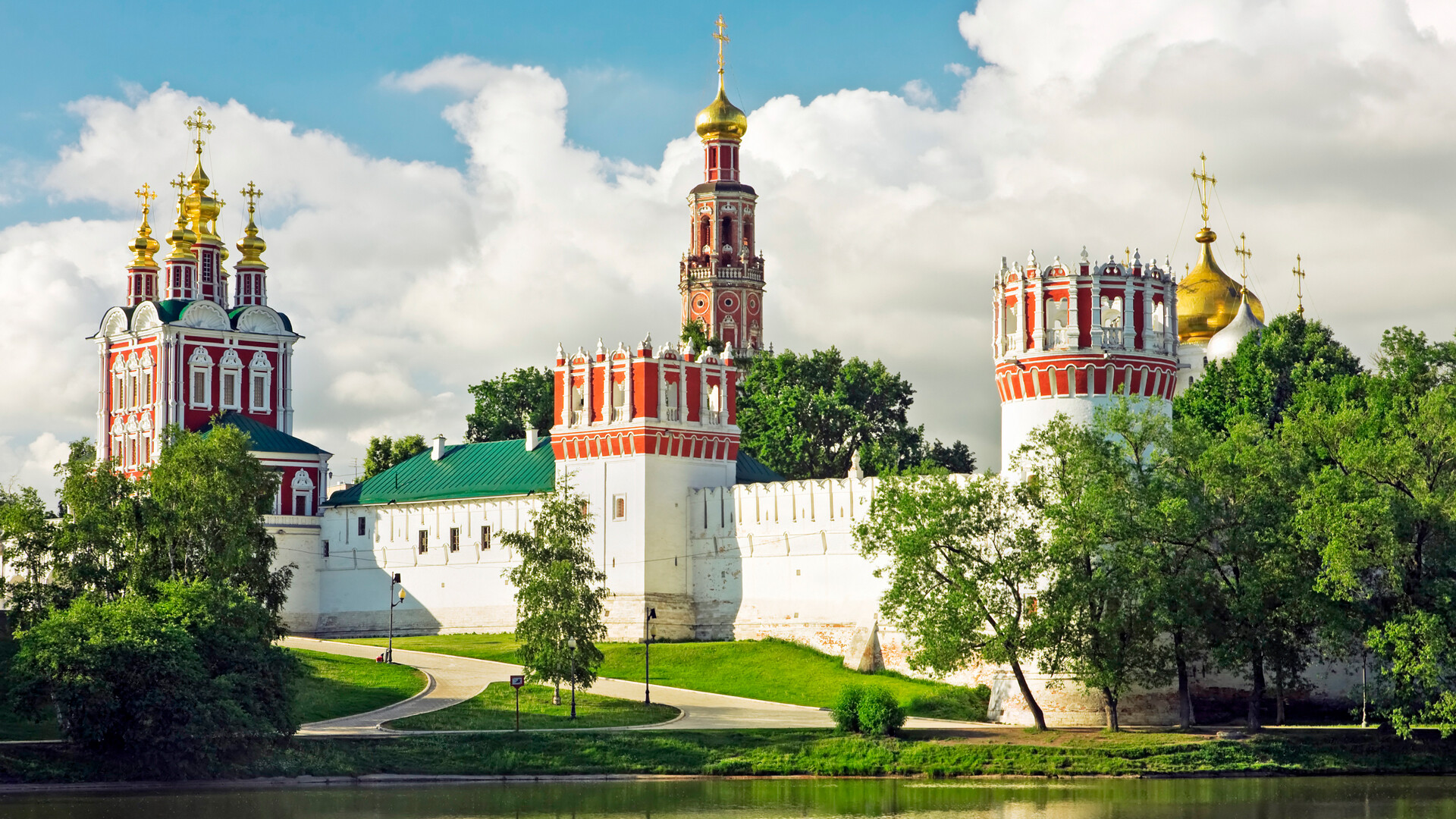
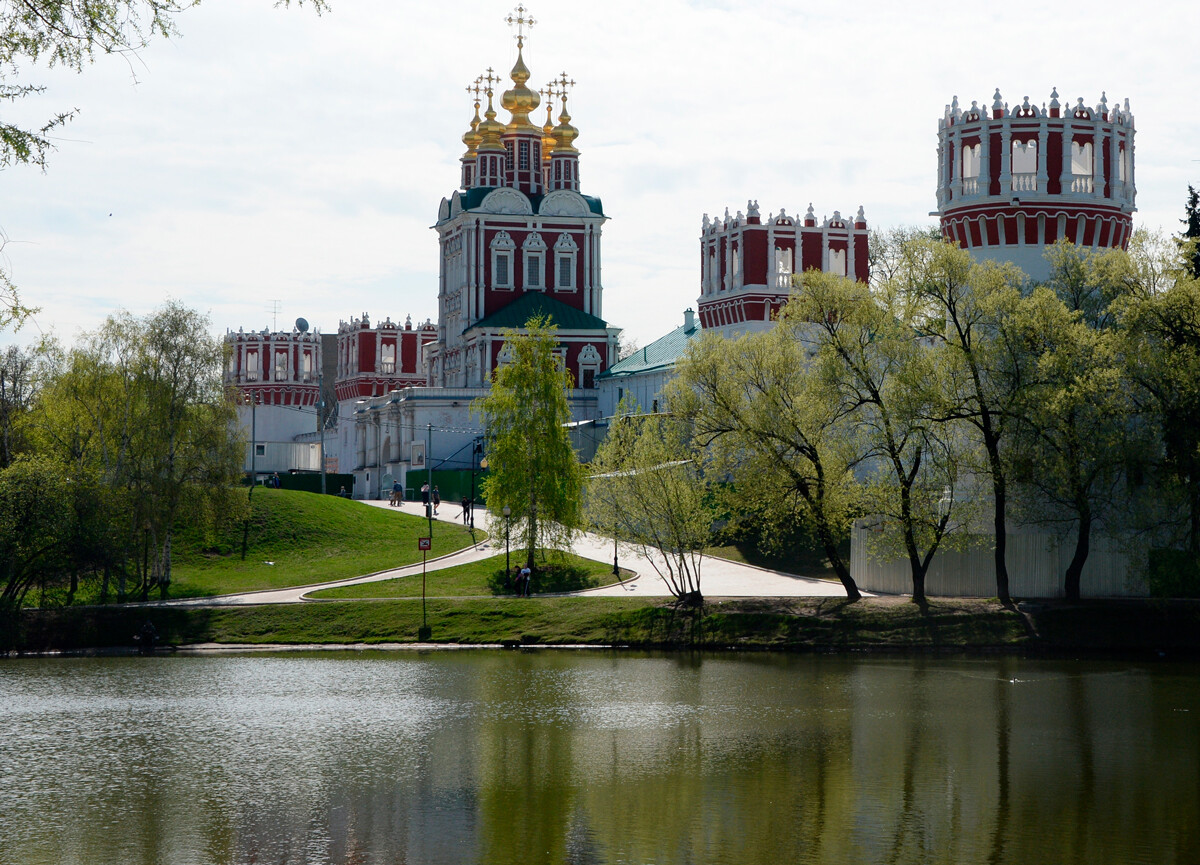
At the end of the 19th century, Novodevichy Convent stood lonely in the middle of a field in the western outskirts of Moscow…

A view of the Luzhniki sloboda and Novodevichy Convent, 1890s
MAMM/MDF/Russia in PhotoNow, dense urban districts have emerged around it; roads and overpasses were built. The place itself is now considered practically the center of the city and an elite district.
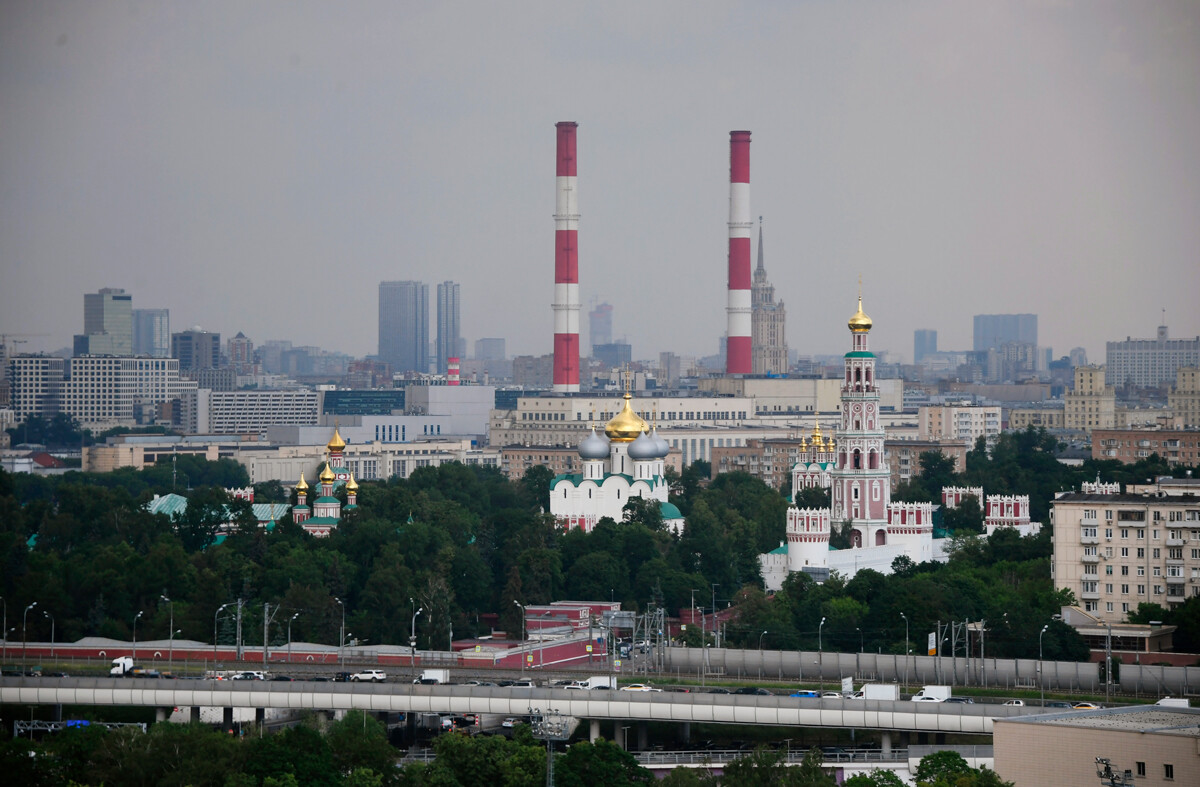
A view of Novodevichy Convent from the roof of Luzhniki Stadium
Ilya Pitalev/SputnikThe full name of the cloister is the ‘Moscow Bogoroditse-Smolensky Novodevichy Stavropegial Convent’. It was founded in May 1524 by Grand Prince Vasili III (the father of Ivan the Terrible). The occasion for this was the reconquering of the city of Smolensk by Russia in the course of the Lithuanian-Muscovite War of 1512-1522 – the city that, for more than a century, was in the possession of the Grand Duchy of Lithuania. The monastery was consecrated in honor of the main relic of Smolensk – the icon Our Lady of Smolensk‘Hodegetria’.
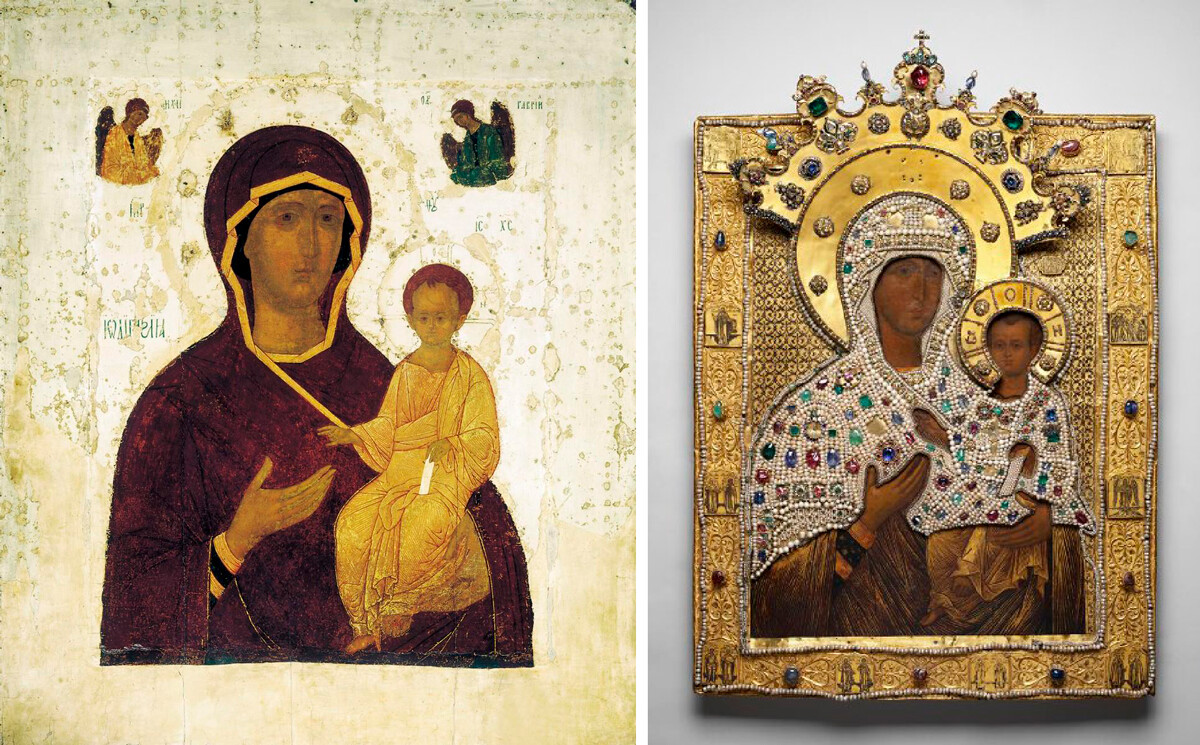
On the left: the Smolensk icon (Dionisius, 1482). On the right: ‘Hodegetria Our Lady of Smolensk’, framed, second half of the 15 century
Public Domain; Moscow Kremlin MuseumsThe new cloister was built on a bend in the Moscow River; historically, this area was called the ‘Maiden’s Field’ (According to legend, young women were gathered here who were then sent along with tribute to the Mongol-Tatars). ‘Novodevichy’ means ‘new women’s’ monastery; that’s because there already was another monastery, the Conception Convent, in the region of the Maiden’s Field.
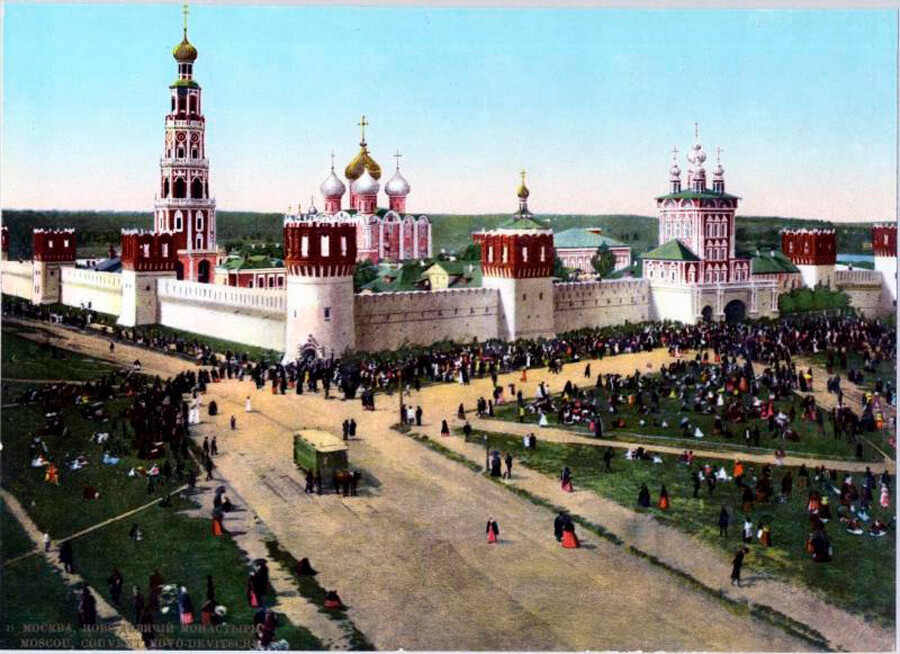
A religious procession around Novodevichy Convent in the 1890s
Peter Pavlov/MAMM/MDF/Russia in PhotoThe main and the oldest cathedral of the monastery is dedicated to the ‘Our Lady of Smolensk’ icon. The architect of the cathedral is not exactly known, but since the cathedral is reminiscent of the Dormition Cathedral of the Moscow Kremlin, it’s often attributed to Italian architects who worked on the Kremlin ensemble (in particular to Aloisio the New).
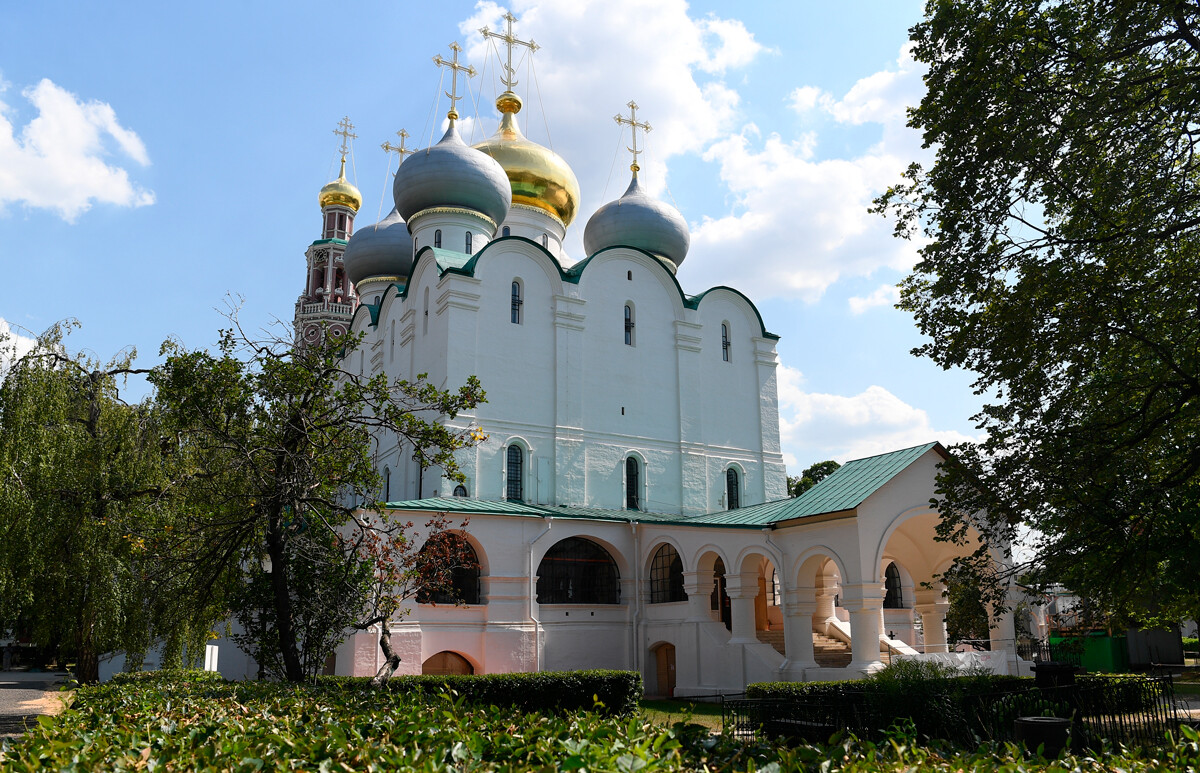
Smolensky Cathedral
Ekaterina Chesnokova/SputnikFrescoes of the 16th century have survived in the monastery and, today, restorers are working on them.
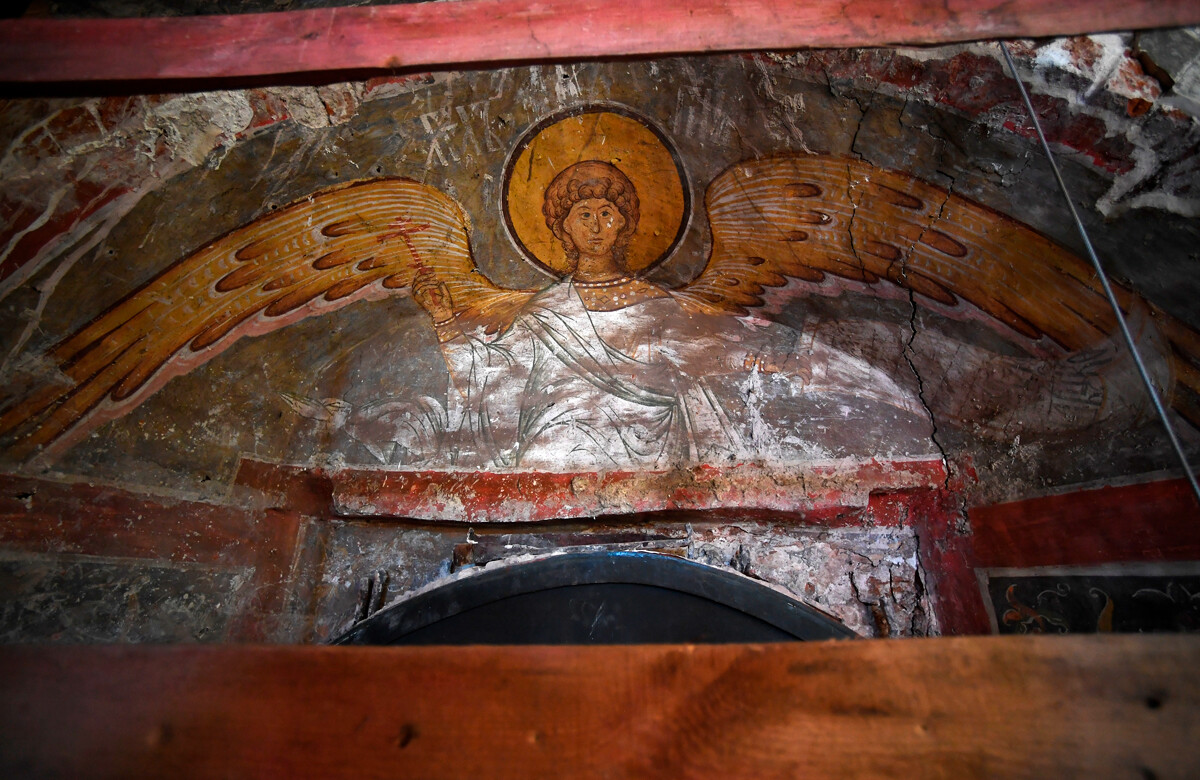
A fresco of the 16th century, found during restoration behind the 17th-century brickwork
Ekaterina Chesnokova/Sputnik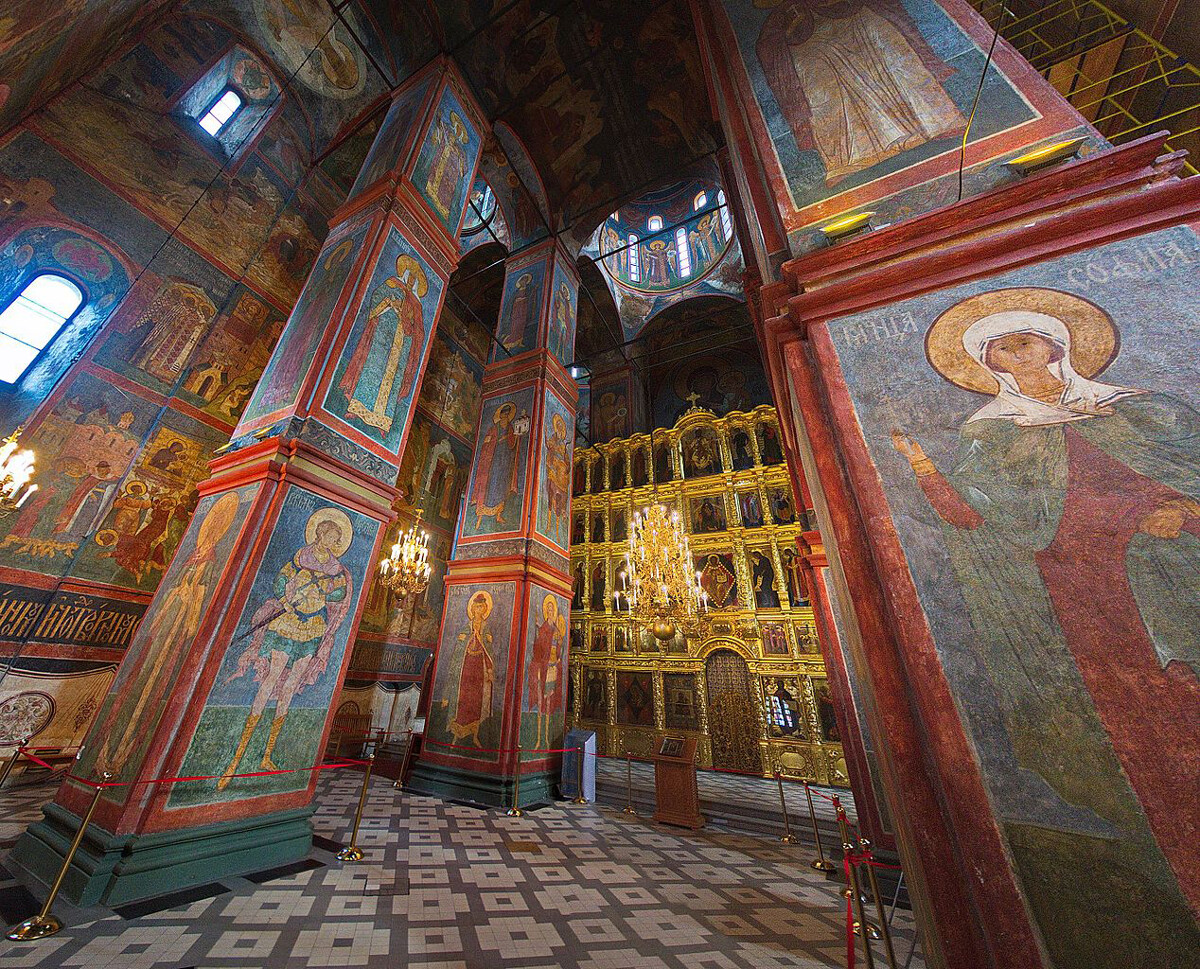
Inside the Smolensky Cathedral
Uwe Brodrecht (CC BY-SA 2.0)During a raid of the Crimean Khan in the 15th century, the monastery was hit by a large fire; the decision was then made to reinforce the monastery that stood on the western border of Moscow; and it was encircled by a strong wall with merlons and arrow slits, which was unusual for a nunnery.
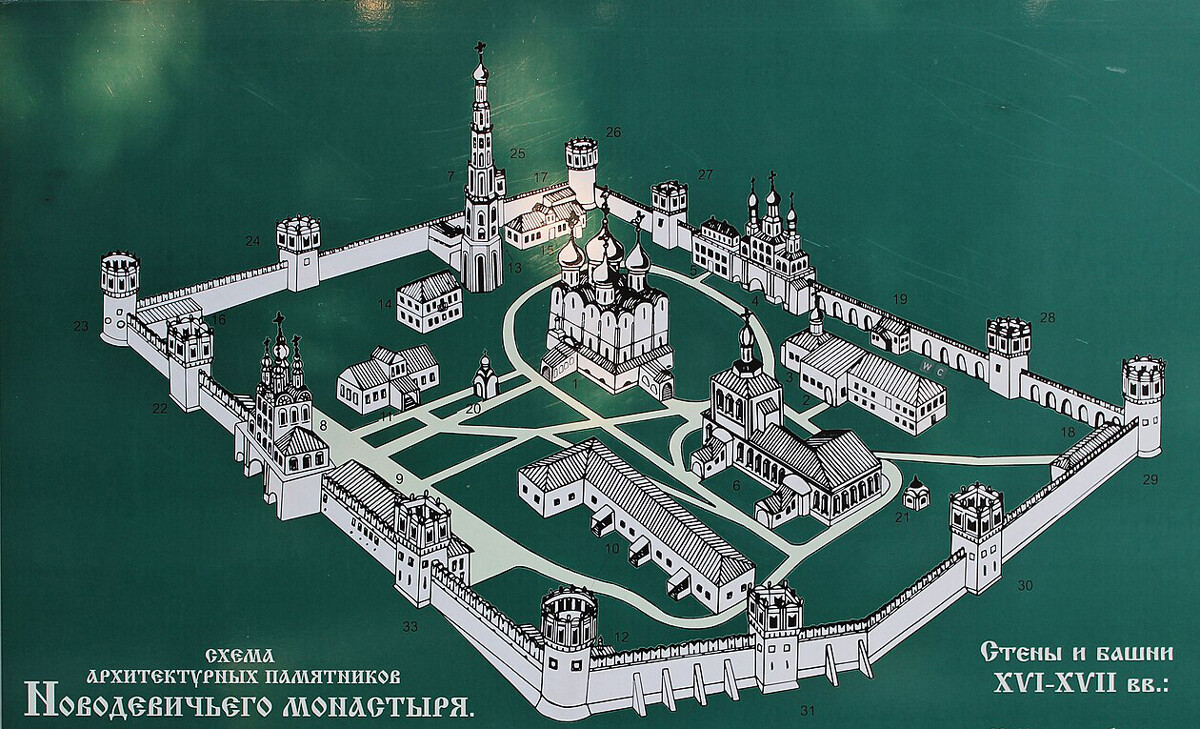
The fortress wall of the monastery resembles the shape of an irregular triangle (one of its corners is beveled, mirroring the outline of the Novodevichy pond). The perimeter of the wall features 12 fortress towers.
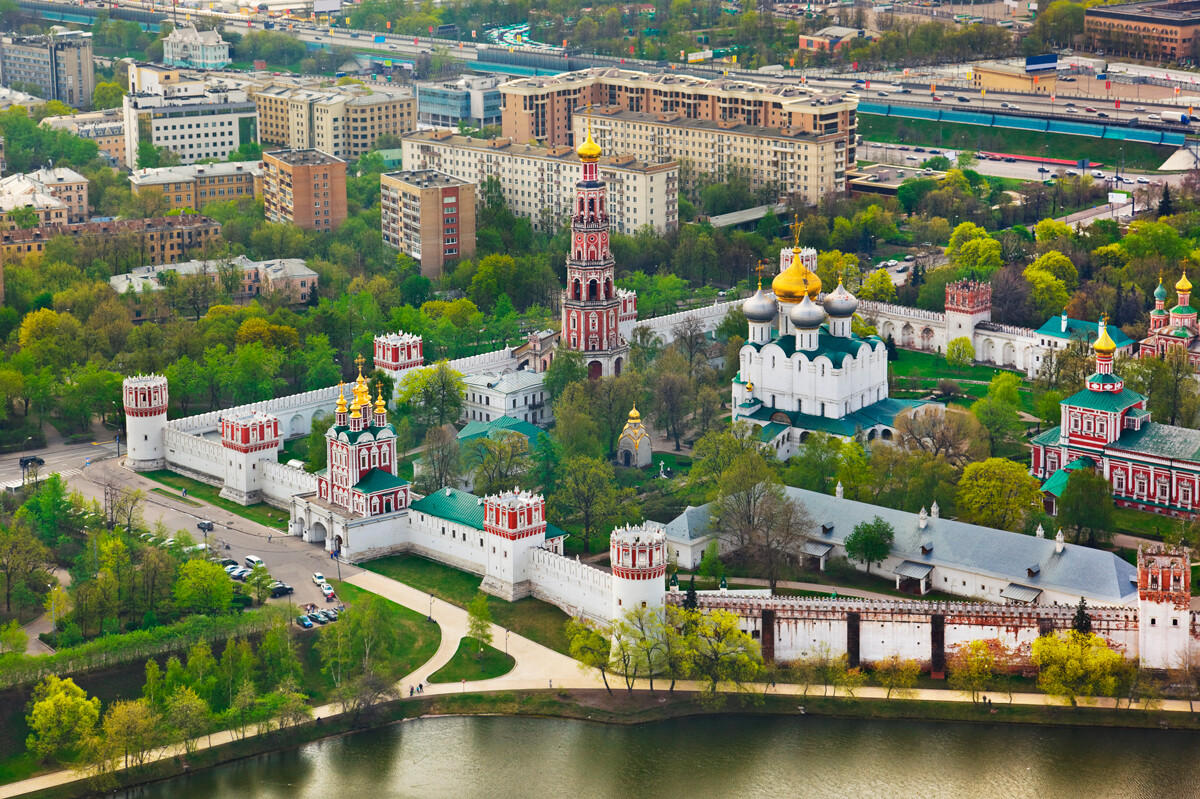
Novodevichy Convent and the pond of the same name in front of it
Legion MediaUnder Ivan the Terrible, the monastery would unofficially bear the name of the “court” monastery – the widows of the Grand Prince family would be “exiled” there (for example, the widow of his son Ivan, whom Ivan the Terrible allegedly killed, at least according to Ilya Repin).
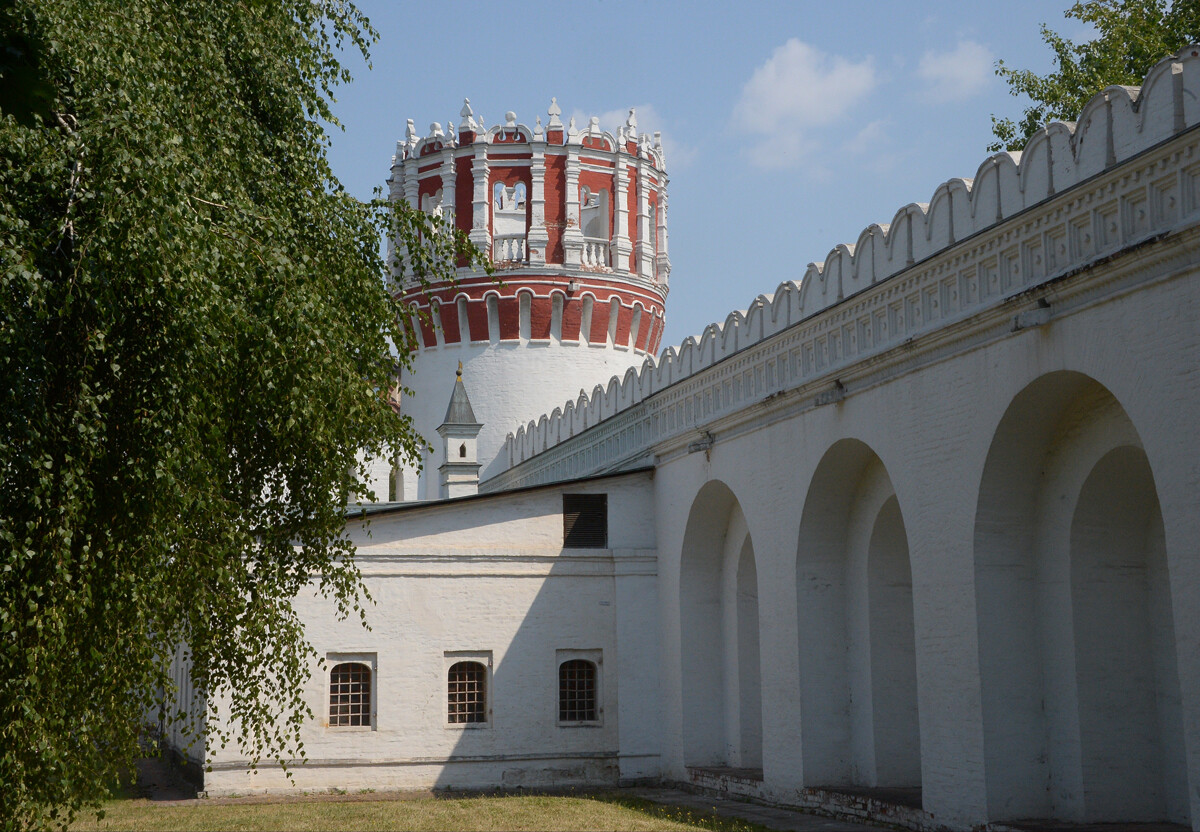
Nikolskaya Tower
Vladimir Fedorenko/SputnikLater, even Tsaritsa Irina Godunova, the widow of Feodor Ioannovich, lived there. The chambers of Irina Godunova are considered one of the oldest buildings of the monastery.
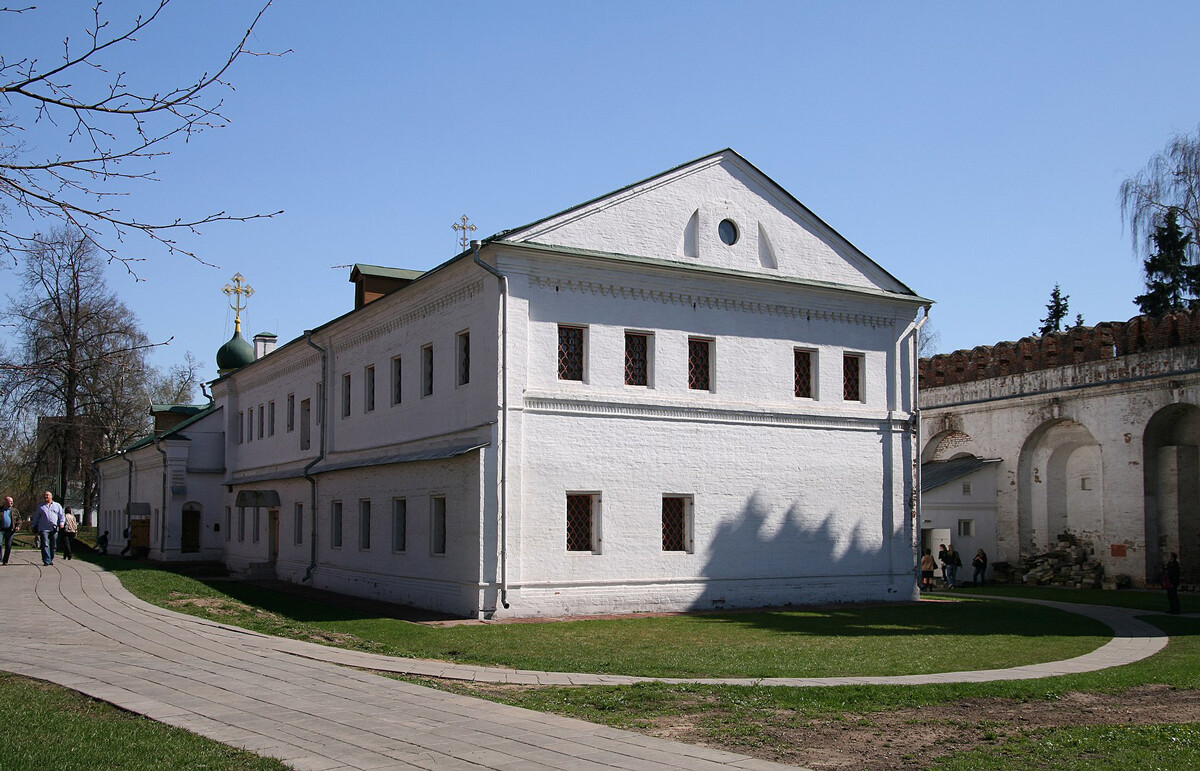
Irina Godunova’s Chambers
Ludvig14 (CC BY-SA 3.0)They’re adjacent to Saint Ambrose’s Church built at the turn of the 16th and 17th centuries.
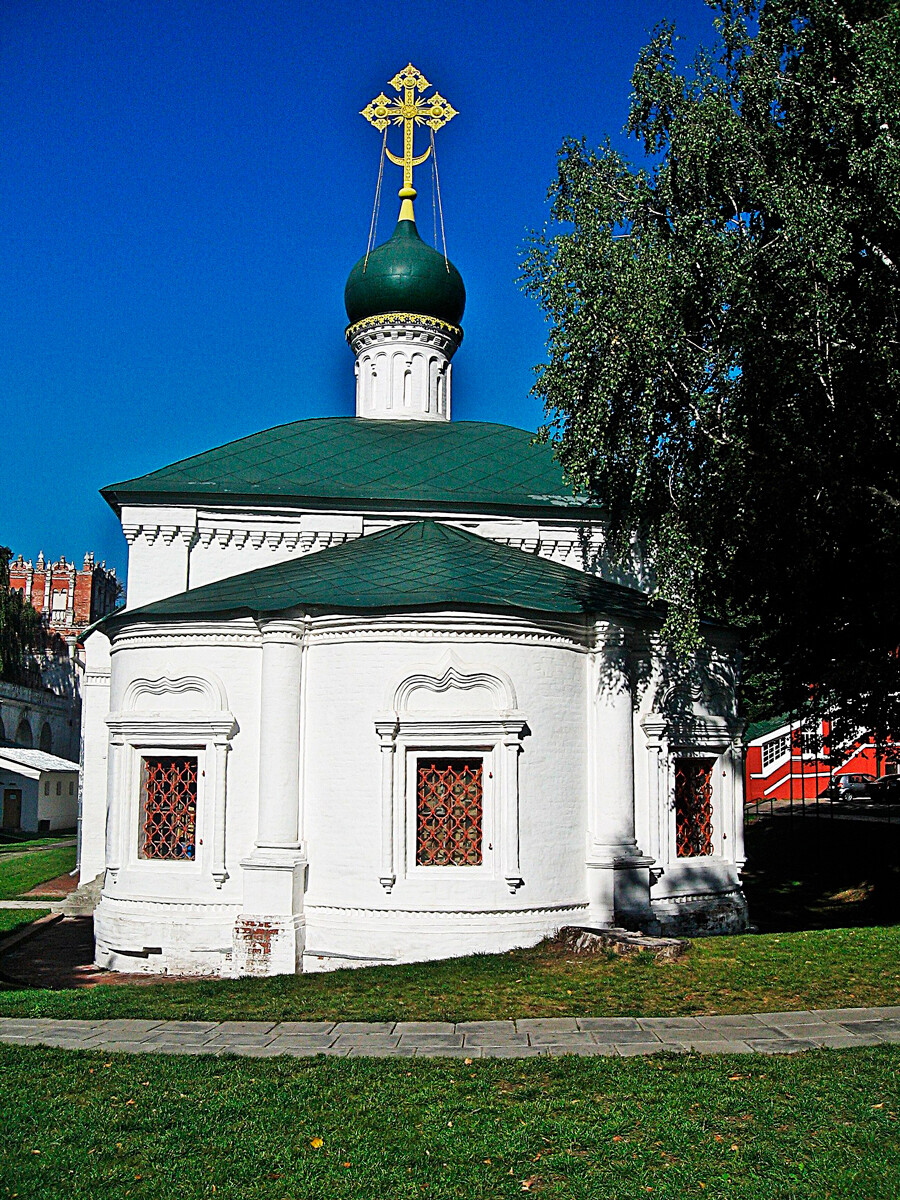
Saint Ambrose’s Church
Massimilianogalardi (CC BY-SA 3.0)It was in this monastery Irina’s brother, Boris Godunov, accepted his ascension as the tsar; he favored the monastery, where his sister was a nun, quite a lot, allocating a lot of funds for it from the treasury. Later, a lot of high-ranking nuns from noble boyar and prince families lived in the monastery, as well, and it was maintained on treasury money. In the 17th century, Tatiana, the sister of Peter the Great, lived there as a nun, as well as his first spouse, Eudoxia Lopukhina.
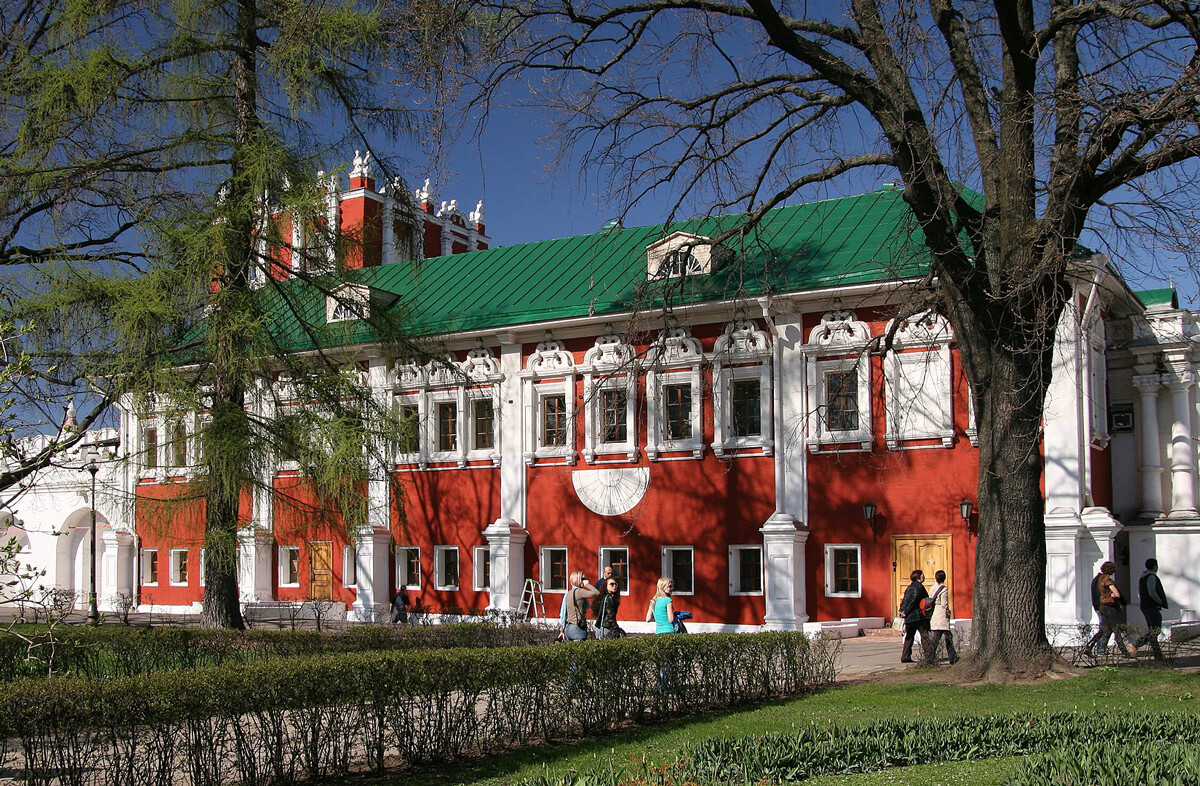
Lopukhina’s Chambers
Ludvig14 (CC BY-SA 3.0)During the ‘Time of Troubles’ and the Polish intervention, the monastery was in the heat of battles and was practically ravaged and ransacked. Many other churches and chambers were built later – at the end of the 17th century, under the Romanovs. For example, the Baroque-style Church of the Transfiguration of the Savior over the northern gate, which is the first to greet anyone visiting the monastery.
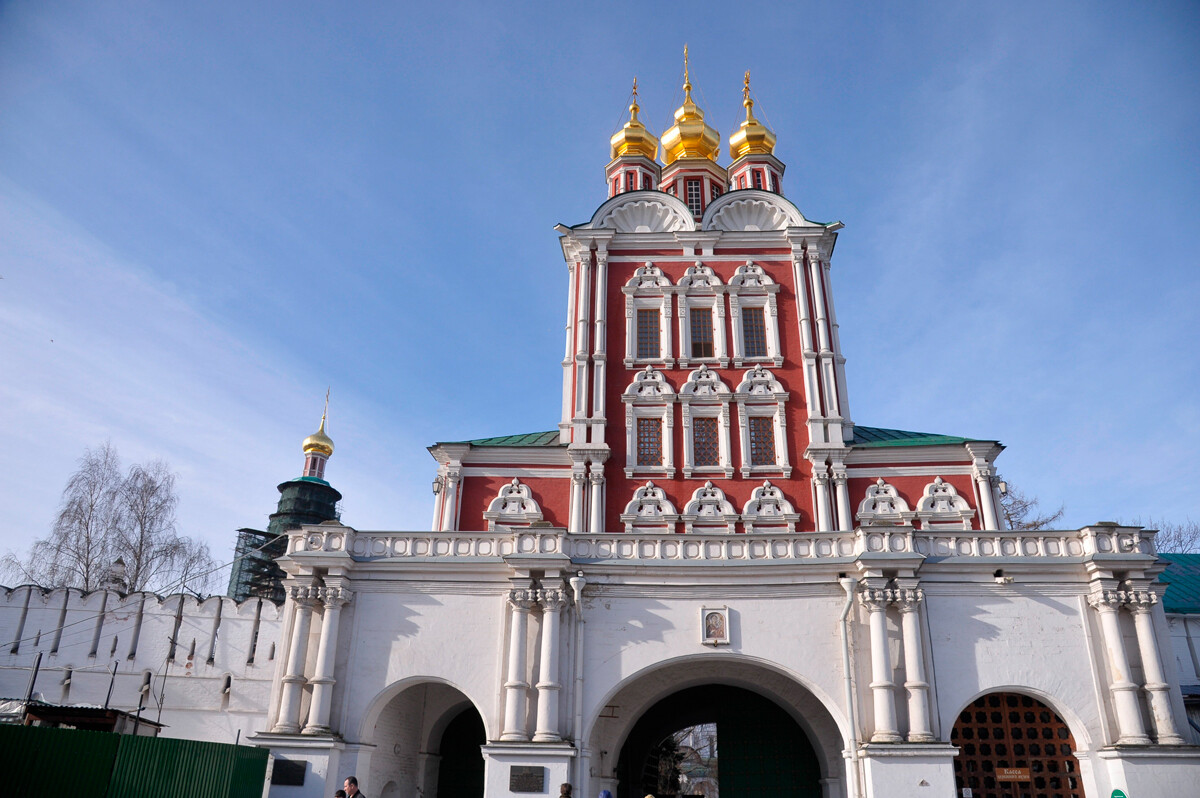
The Church of the Transfiguration of the Savior over the gate
Alexander Avilov/Moskva AgencyAt the end of the 17th century, the Church of the Assumption and a refectory for it were built.
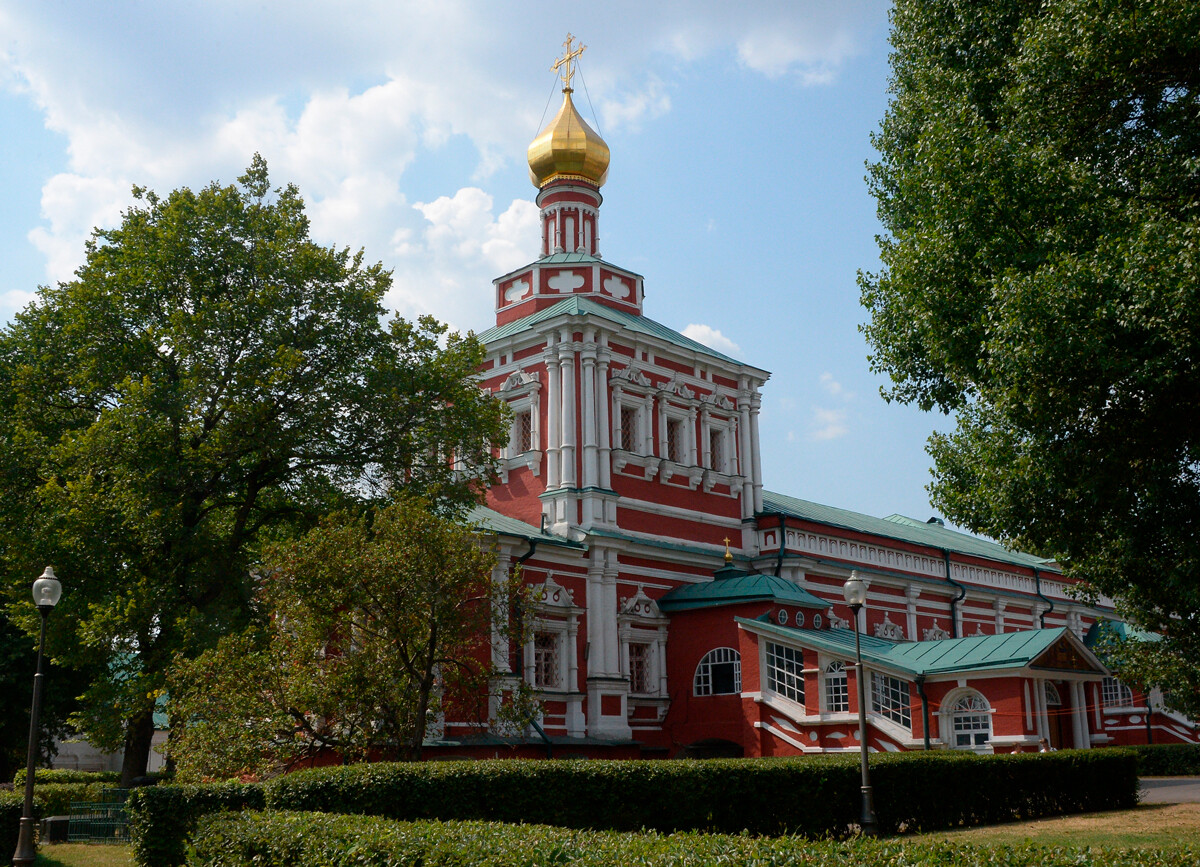
The Church of the Assumption of the Blessed Virgin Mary
Vladimir Fedorenko/Sputnik
Inside the Assumption Church
Uwe Brodrecht (CC BY-SA 2.0)In 1690, a Baroque-style bell tower was erected. Later, the monastery gained several more administrative buildings and chambers.

The monastery's bell tower
A.Savin, WikiCommonsTsarevna Sophia, the older sister of Peter the Great and his regent, spent her last days in the monastery. She, as many other high-ranked nuns, was buried in the Smolensky Cathedral. In total, more than 50 nuns of tsar, prince, and boyar blood are buried in the podklet (non-residential ground floor) of the cathedral.
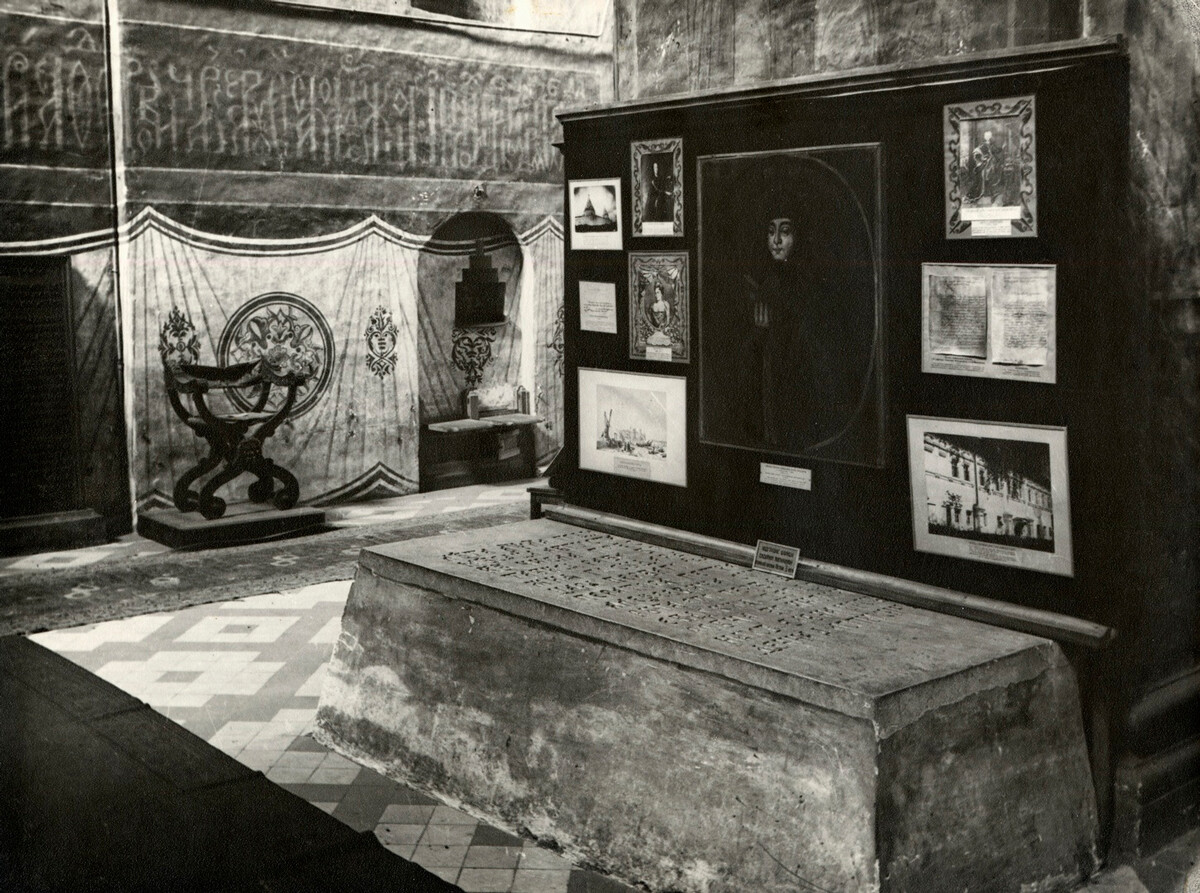
The grave of Tsarevna Sophia
Russian Union of Photo Artists/Russia in PhotoGradually, not only nuns, but also simply noble Moscow denizens were buried within the monastery walls; a whole necropolis formed on the territory of the cloister (by the beginning of the 20th century, it had almost 3,000 graves).
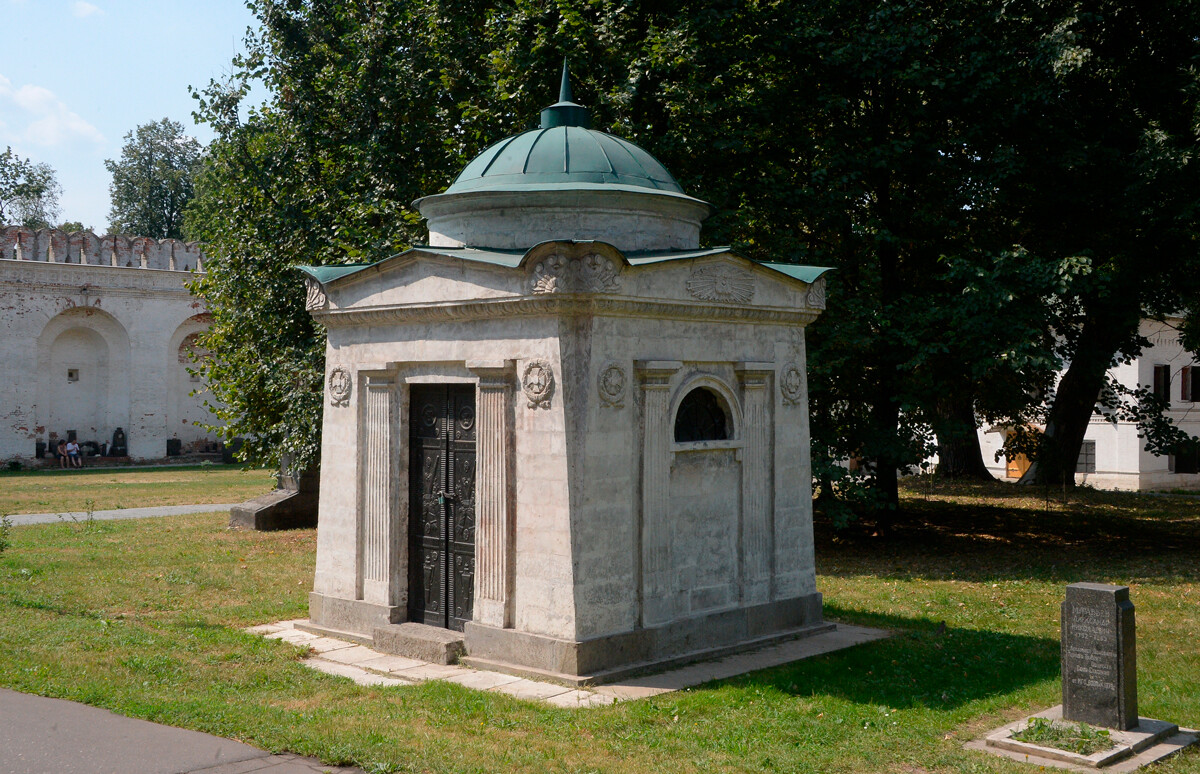
Volkonsky’s mausoleum
Vladimir Fedorenko/SputnikThe neo-Gothic style chapel-tomb of the manufacturers, the Prokhorovs, was built in the 1910s – it’s one of the last new buildings of the monastery.
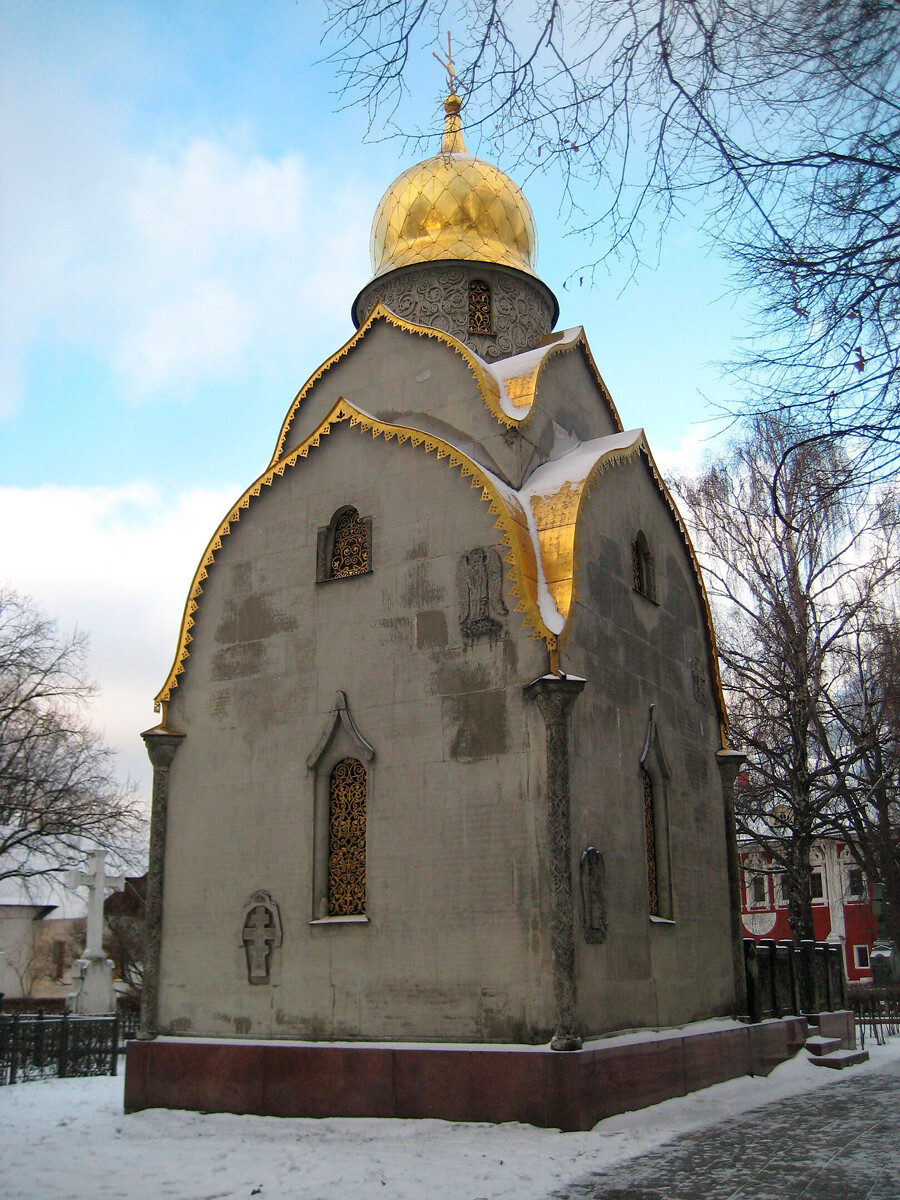
Prokhorovs' chapel
shakko (CC BY-SA 3.0)As such, in 1898, a Novodevichy cemetery was established outside the monastery walls, which became the burial site for many of the Soviet elite (to this day, it remains one of the most “prestigious” cemeteries, where only very famous and important people are buried).

A columbarium at the Novodevichy cemetery
Vladimir Trefilov/SputnikToday, the Novodevichy Convent and the park near the Novodevichy pond is one of the Moscow denizens’ favorite places for walks.

The sculptural composition "Make way for the ducks!". This copy of the same work from a garden in Boston was given to Russia by Barbara Bush in 1991
Vladimir Fedorenko/SputnikDear readers,
Our website and social media accounts are under threat of being restricted or banned, due to the current circumstances. So, to keep up with our latest content, simply do the following:
If using any of Russia Beyond's content, partly or in full, always provide an active hyperlink to the original material.
Subscribe
to our newsletter!
Get the week's best stories straight to your inbox